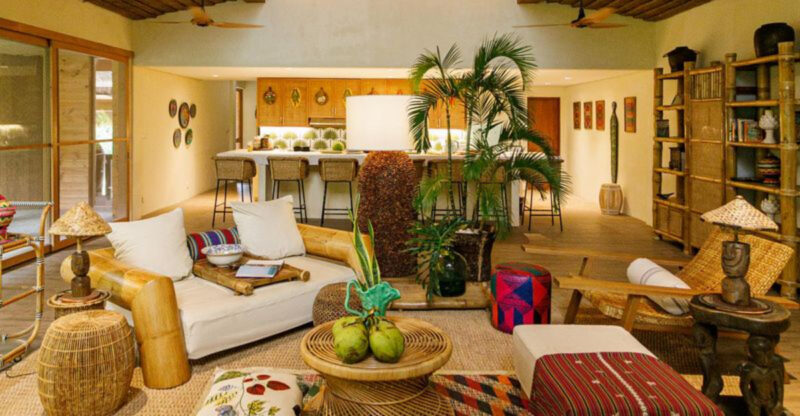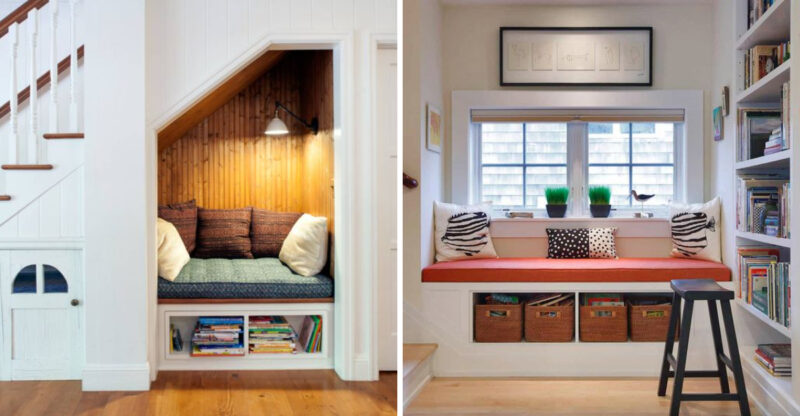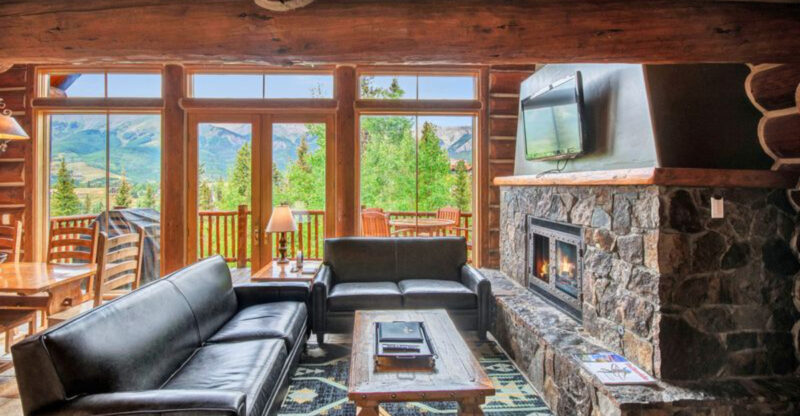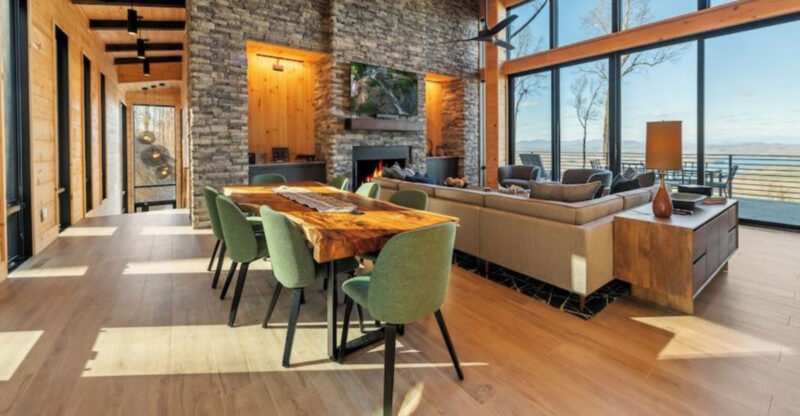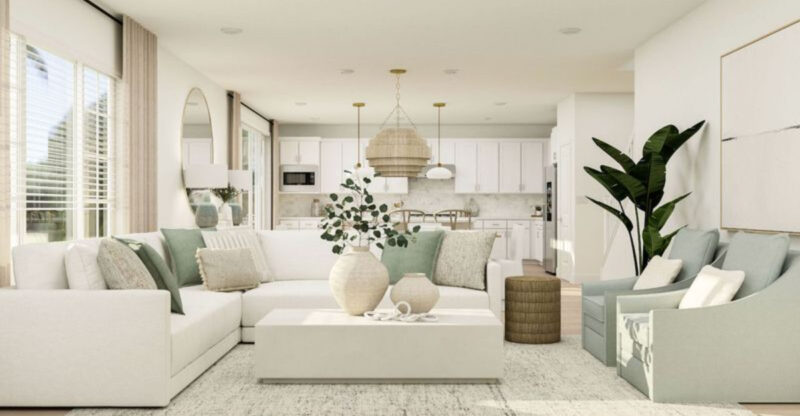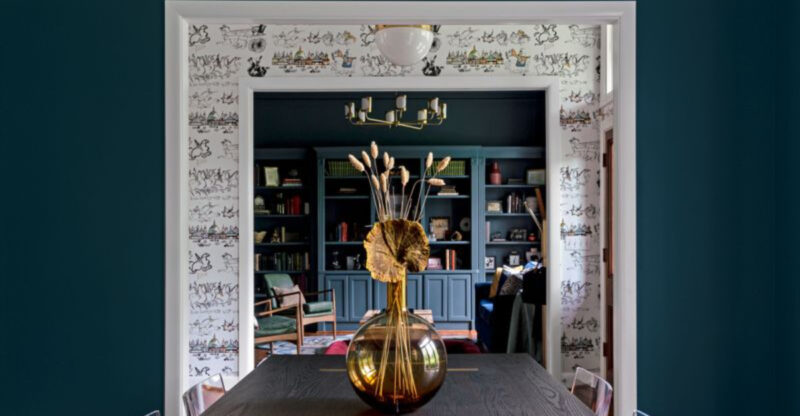13 Kitchen Colors Texans Are Ditching In 2025 (Plus 6 That Went Out With The Longhorns)
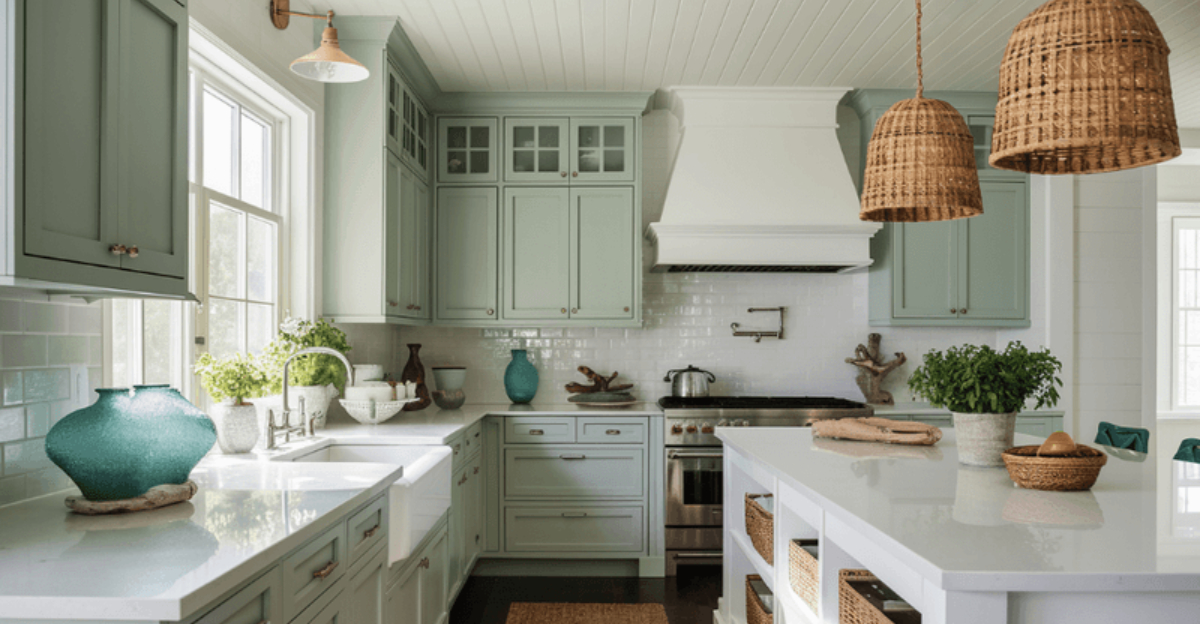
Howdy, fellow Texans! As a kitchen designer who’s seen more color schemes than a rodeo has cowboys, I’m here to spill the beans on what’s hot and what’s not in our Lone Star kitchens.
Texas tastes are shifting faster than our weather patterns, with bold new palettes replacing yesterday’s favorites. Let’s take a tour through the colors heading for the sunset and those that already rode off with the Longhorns.
1. Cherry Red: The Tomato That Spoiled
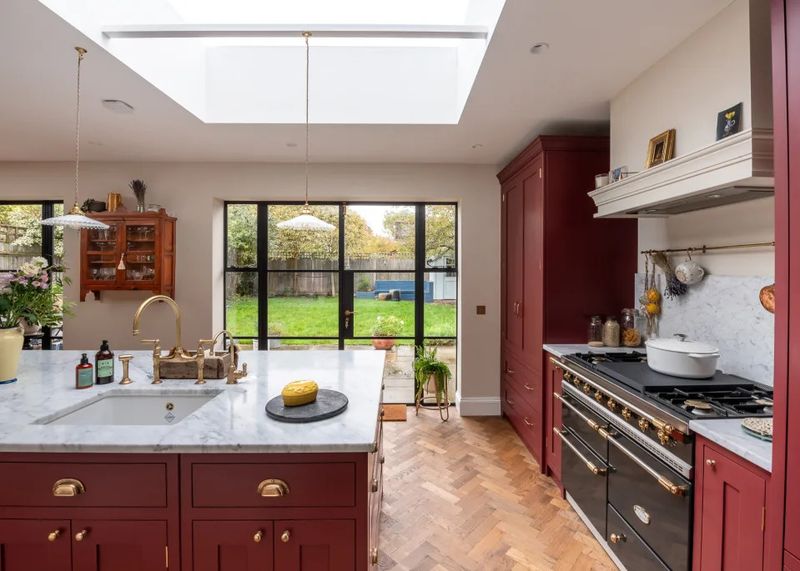
Cherry red kitchens are scurrying out faster than armadillos at high noon. Once the darling of statement-making homeowners, this punchy shade now screams ‘early 2000s makeover show’ rather than ‘sophisticated Texas kitchen.’
Though still clinging to life in diners and retro spaces, modern Texans want kitchens that feel airy and expansive. Cherry red does exactly the opposite, it closes walls in like a too-tight pair of boots.
Nowadays, folks are swapping this intense hue for subtler splashes of color that don’t overwhelm the senses.
2. Tuscan Gold: The Fool’s Gold of Kitchens
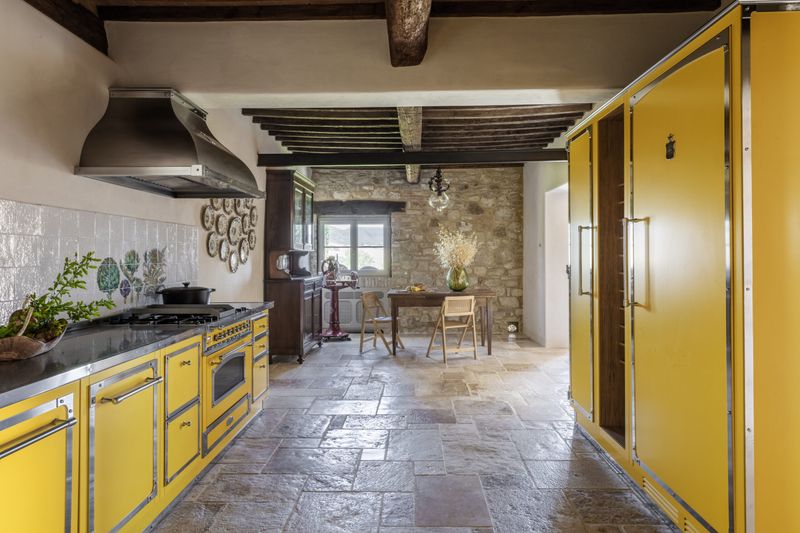
Remember when every Texas kitchen aspired to look like an Italian villa? Tuscan gold, with its yellowy-orange undertones, was slathered across walls statewide during the early 2000s McMansion boom.
However, this muddy shade has lost its luster faster than bluebonnets fade in July. The heavy, artificial warmth feels dated and dreary to today’s homeowners.
Many clients now cringe when showing me their gold-toned kitchens, begging for something that doesn’t remind them of old spaghetti sauce advertisements.
3. Sage Green: From Herb Garden To Has-Been
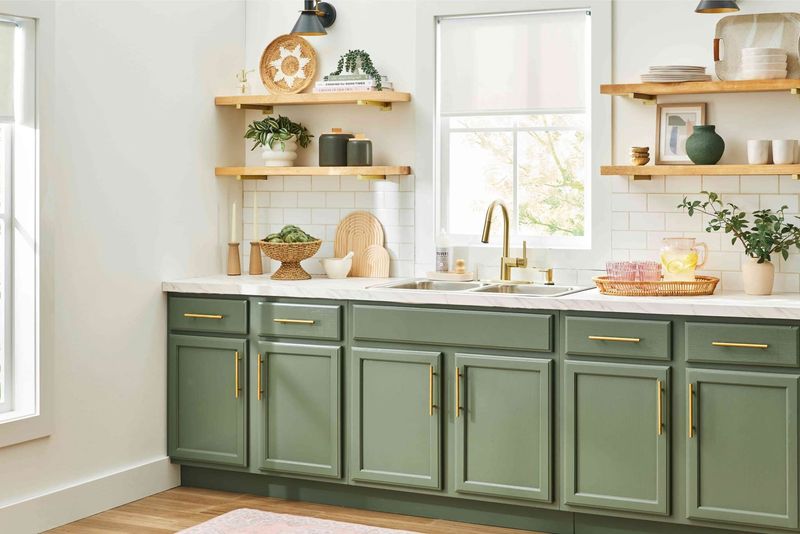
Though sage green enjoyed a renaissance during the pandemic, Texas homeowners are already showing signs of herb fatigue. This muted, grayish-green initially felt calming and natural, perfect for our plant-obsessed moment.
Yet the tide is turning. What once seemed sophisticated now reads as indecisive, neither truly green nor truly neutral. Many clients confess their sage kitchens now feel like failed experiments rather than timeless choices.
The problem? It’s simply too safe, too expected, and frankly, too millennial for forward-thinking Texas tastes.
4. Barn Red: Not Even Farmers Want It Anymore

Barn red kitchens are being put out to pasture across Texas. This rustic-chic color that once channeled farmhouse authenticity now feels as contrived as a city slicker at a cattle auction.
Even in genuine Texas farmhouses, owners are trading this heavy hue for cleaner palettes. The color that was supposed to evoke honest rural charm instead dates a kitchen faster than last week’s bluebonnet photos on Instagram.
Most telling? Real farmers and ranchers were never big fans! They get enough of that color on their actual barns.
5. Mustard Yellow: Condiment Color Gone Cold
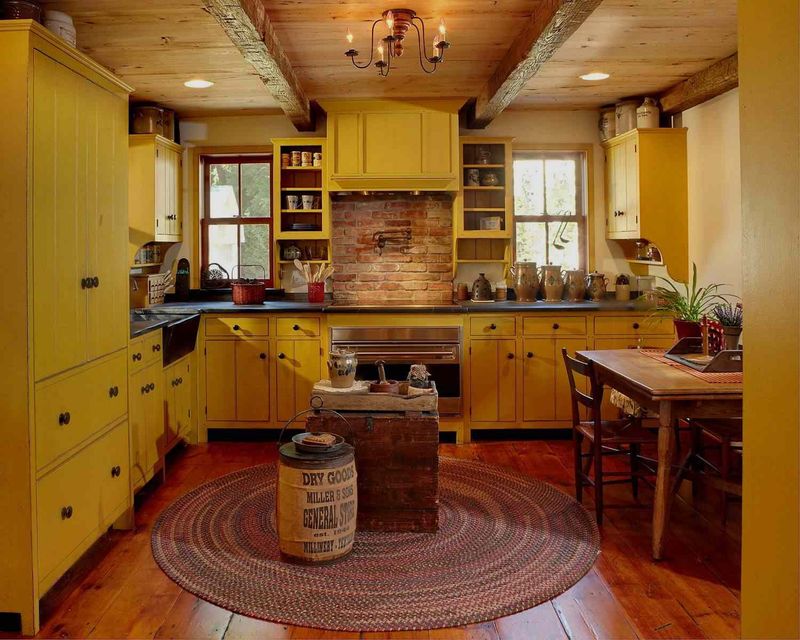
Mustard yellow is getting squeezed out of Texas kitchens faster than you can say “pass the Whataburger.” This retro color made a brief comeback during the mid-2010s vintage revival but has quickly soured in popularity.
The problem isn’t just its intensity, it’s the psychological effect. Nobody wants to cook in a space that subconsciously reminds them of condiments. Plus, this stubborn shade fights with nearly everything else in the room.
When clients show me their mustard kitchens now, they always say the same thing: “What was I thinking?”
6. Chocolate Brown: The Dessert That’s Now Just Dirt
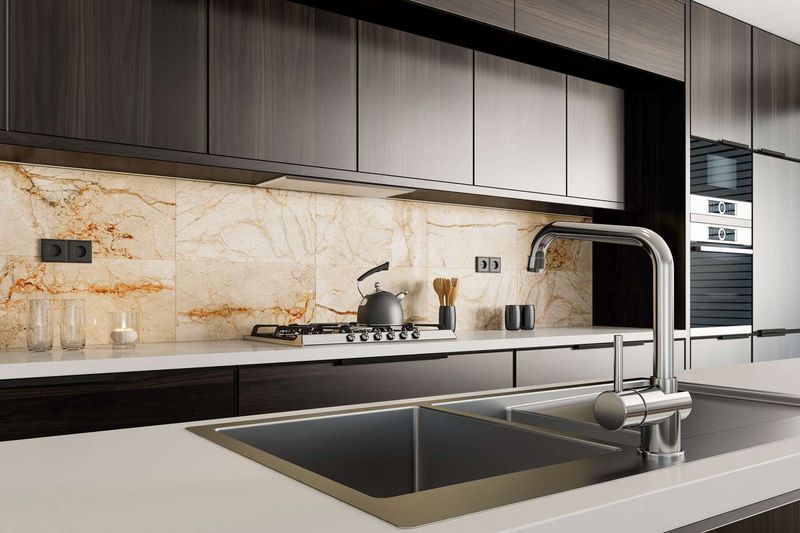
Curious to see which kitchen colors are melting out of Texas homes faster than ice cream in August? Chocolate brown is leading the exodus! This ultra-dark choice, especially popular in the late 2000s, was meant to convey richness and luxury.
Instead, it’s aged about as well as milk left out in the San Antonio sun. Rather than creating warmth, these kitchens now feel like caves, dark, oppressive, and impossible to keep looking clean. The heavy brown cabinets that once seemed sophisticated now evoke outdated corporate boardrooms.
Texans are swapping this overbearing shade for colors that don’t swallow all available light.
7. Olive Green: The Martini Garnish That Fell Flat
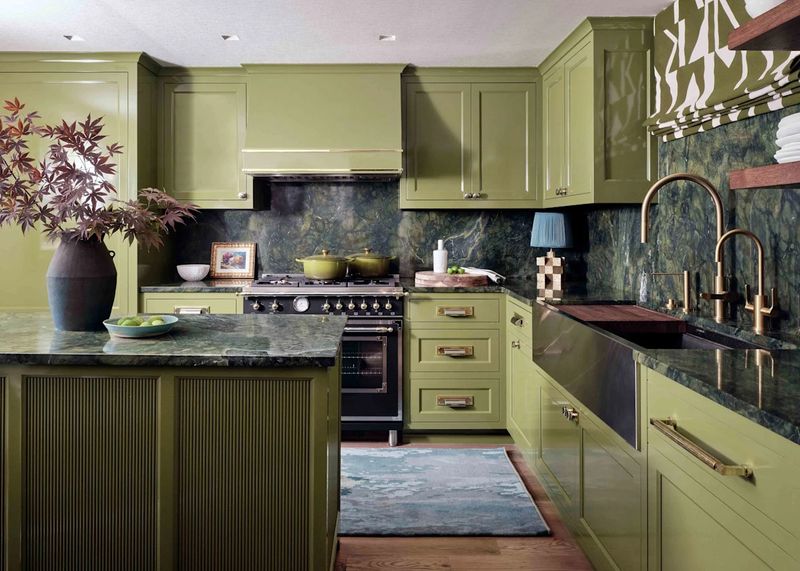
Olive green kitchens are being pitted against fresher alternatives across Texas. This murky military-inspired tone once signaled sophistication but now reads as depressing and drab to most homeowners.
The problem with olive is its inherent muddiness, neither radiant enough to make a statement nor neutral enough to disappear gracefully. Many clients describe their olive kitchens as perpetually looking dirty, regardless of how much they clean.
Even in Austin, where quirky colors typically enjoy extended lifespans, olive green has been relegated to the compost bin of kitchen design history.
8. Orange Terra Cotta: The Clay That Turned To Mud
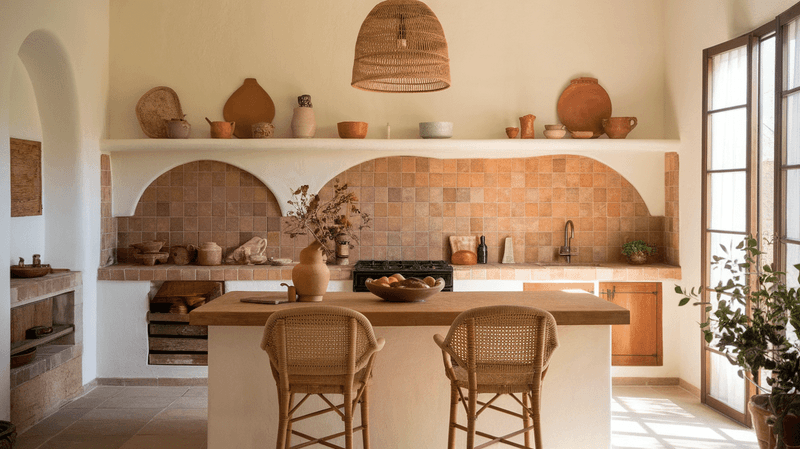
Orange terra cotta, once the darling of Southwestern kitchens, is crumbling from popularity. This rusty-orange tone dominated Texas homes in the 90s, particularly near the border where Mexican-inspired aesthetics reigned supreme.
However, modern Texans find this color overwhelmingly warm and dated. The intensity that once felt culturally authentic now reads as a theme-park version of Southwestern style.
Across El Paso and San Antonio, homeowners are swapping these warm, earthy kitchens for shades that don’t make the kitchen feel like a slow roast in a clay oven.
9. Cranberry: The Holiday Color That Overstayed Its Welcome
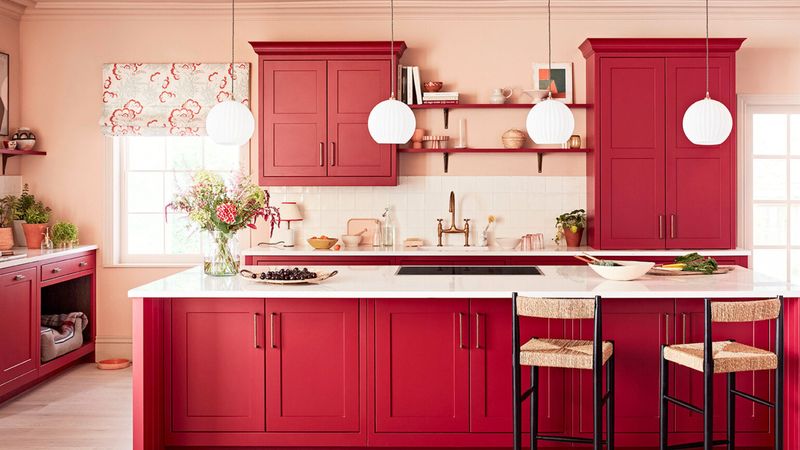
Cranberry kitchens are being carved out of Texas homes with the enthusiasm of a Thanksgiving turkey. This deep, purplish-red shade had its heyday in the late 90s when jewel tones dominated interior design.
The issue? It’s seasonally confused. Cranberry makes every day feel like Christmas dinner, which gets tiresome by February. Plus, this intense color creates psychological effects that few consider, studies show red environments actually increase heart rate and blood pressure.
Houston designers report cranberry kitchens are among the first things new homebuyers request to change when purchasing older properties.
10. Beige-On-Beige: The Vanilla Ice Cream That Melted
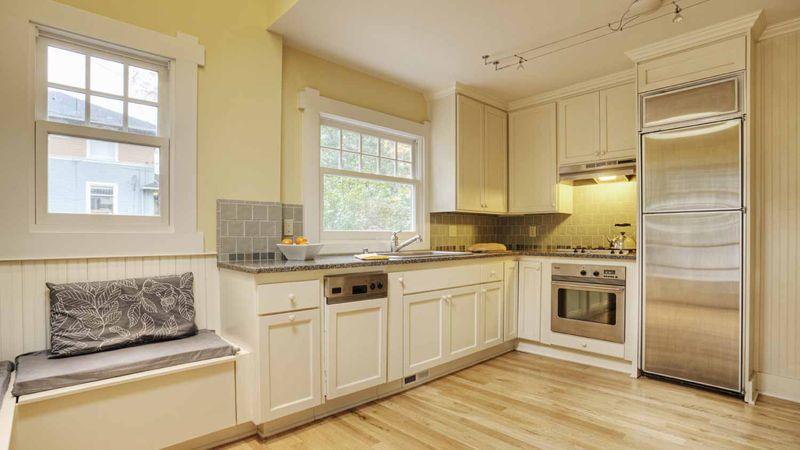
Beige-on-beige kitchens are being kicked to the curb faster than tumbleweeds in a West Texas windstorm. This monochromatic nightmare once represented the height of neutral sophistication.
Now it’s the design equivalent of watching paint dry. The total lack of contrast creates spaces that feel like they’re actively trying to disappear. Many clients describe their all-beige kitchens as the room they can’t remember even when they’re standing in it.
The thing is, today’s Texans want personality, not rooms that look pre-faded.
11. Mint Green: The Toothpaste Tint That Lost Its Freshness
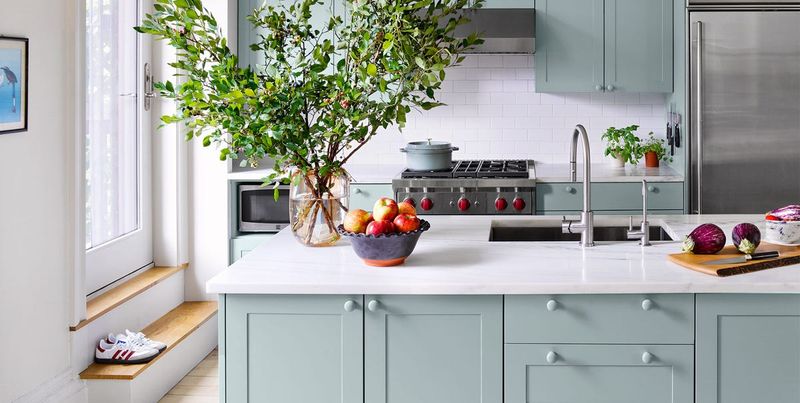
Why are mint green kitchens getting kicked out faster than a jalapeño at a Texas BBQ? This pastel shade had its moments in the ’50s and the early 2010s retro wave, but now it’s feeling more like a hospital hallway than a fresh kitchen vibe.
Instead of adding zest, mint leaves many kitchens stuck in a time warp that’s anything but fresh. Even vintage-loving Austinites are swapping mint for hues that don’t scream “dentist’s waiting room.”
12. Jet Black: The Funeral for Kitchen Visibility
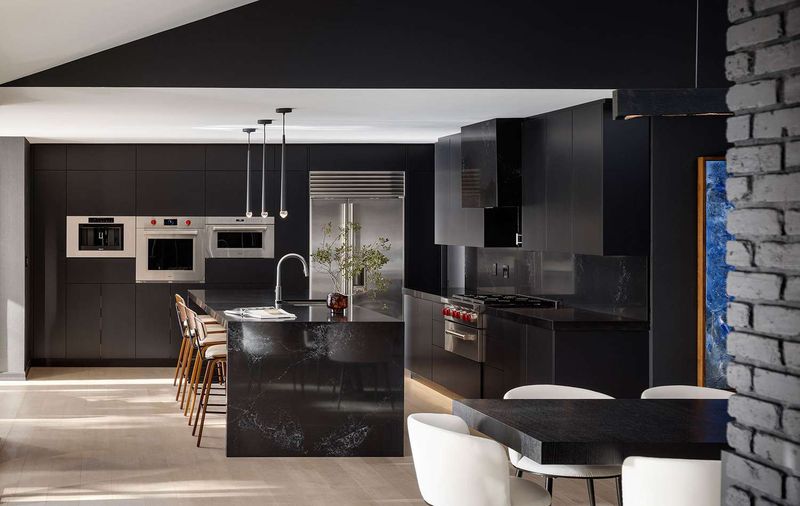
Jet black kitchens are fading to gray across the Lone Star State. This ultra-dramatic choice, which peaked during the industrial design craze, has proven impractical in our sunny climate.
The problems are numerous: black shows every speck of dust, fingerprint, and water spot with merciless clarity. It absorbs heat like asphalt in August, making already warm Texas kitchens feel like saunas.
Most critically, black creates psychological weight that feels oppressive during our long, bright summers. Dallas designers report black kitchens are now the most regretted color choice among their clients.
13. Deep Navy Blue: The Sea That Dried Up
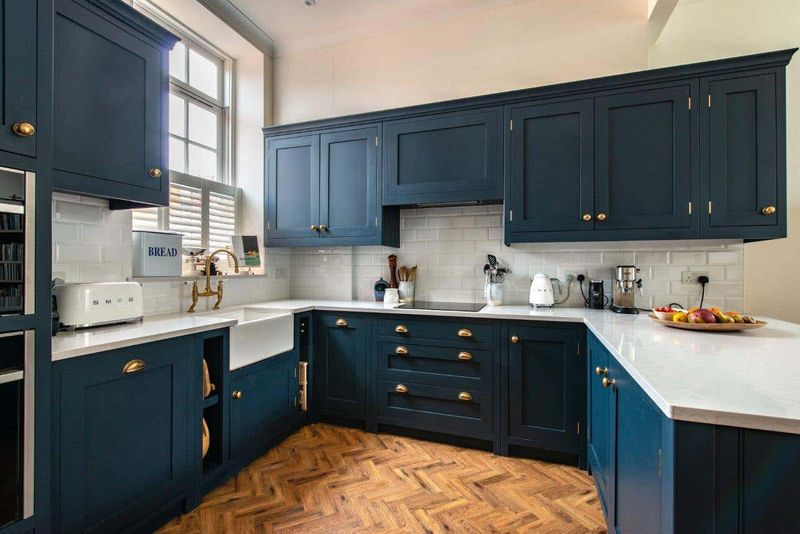
Deep navy blue kitchens are sailing into the sunset across Texas. This bold maritime hue enjoyed tremendous popularity between 2018-2022, when it seemed every Pinterest-inspired renovation featured navy cabinets paired with brass hardware.
However, the trend has reached saturation point. What once felt fresh and daring now reads as the most obvious choice for someone who wanted to appear design-savvy without taking actual risks.
Houston designers report clients specifically requesting “anything but navy blue” when describing their kitchen renovation goals for 2025.
14. Harvest Wheat: The Field That Finally Got Harvested
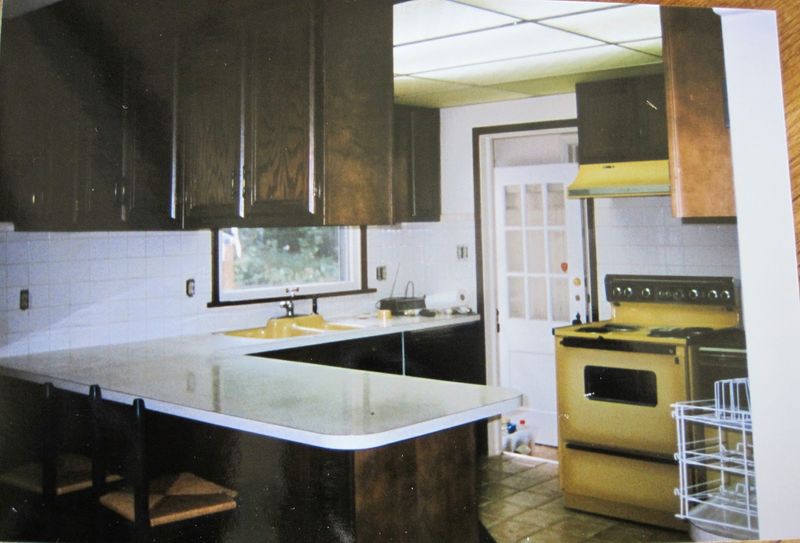
Harvest wheat rode off with the Longhorns years ago, though some stubborn specimens still lurk in unrenovated Texas kitchens. This yellowish-beige tone dominated the 1980s and early 90s, paired with country geese decor and oak cabinets.
Nothing dates a kitchen more instantly than this particular shade. When I spot harvest wheat during home consultations, I know exactly which decade the kitchen was last updated, no carbon dating needed!
The associations are so strong that even younger homebuyers who didn’t live through the original trend instinctively recognize it as grandmotherly and outdated.
15. Seafoam Green: The Wave That Crashed
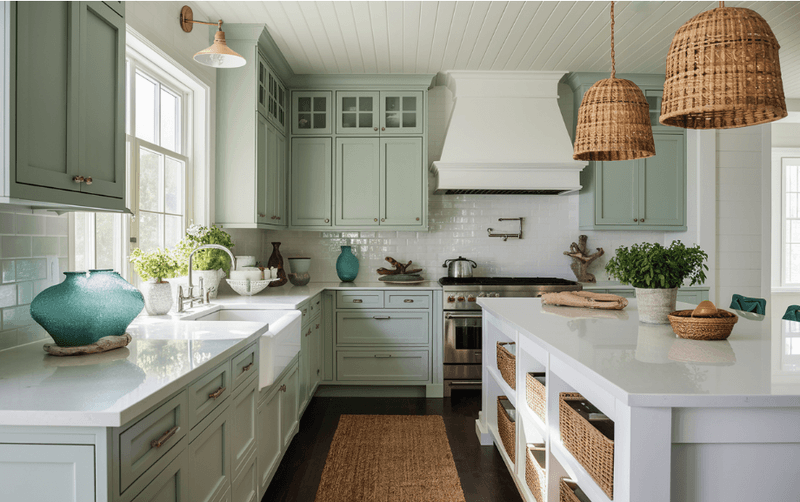
The seafoam green washed away with the Longhorns so long ago most Texans under 40 have never seen it in its natural habitat. This pastel aqua shade was inescapable in 1950s kitchens, often paired with pink appliances and boomerang-patterned countertops.
Though briefly resurrected during various retro revivals, seafoam green never regained mainstream acceptance in Texas kitchens. The color is now so strongly associated with vintage diners and old-school motels that it can’t be used without creating an intentional time capsule effect.
Austin might embrace kitsch, but even they’ve moved beyond seafoam.
16. Baby Blue: The Gender Reveal That Failed
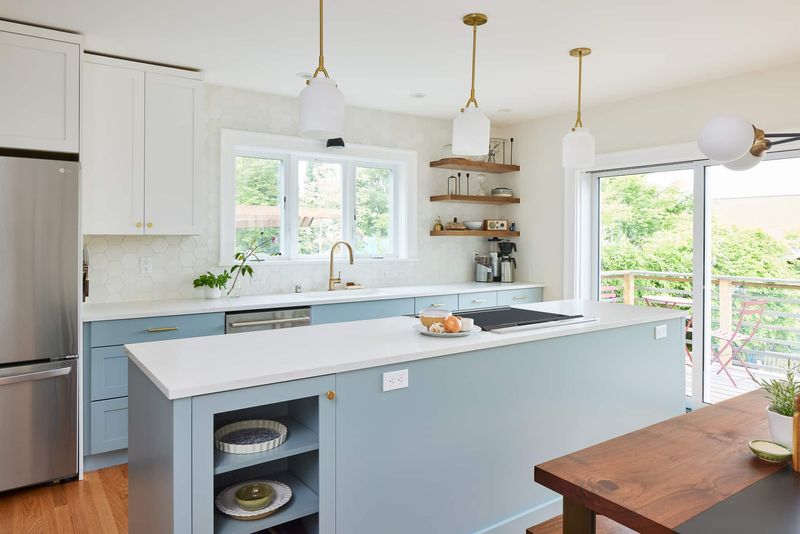
Baby blue kitchens went out with the Longhorns decades ago, though they occasionally resurface in ill-advised renovation attempts. This pastel shade dominated 1950s kitchens alongside pink and yellow, creating spaces that now look comically dated.
The color’s strong nursery associations make it nearly impossible to use without creating spaces that feel infantilizing. When clients show me inspiration photos featuring baby blue, I gently steer them toward more sophisticated blue-gray alternatives.
Even in historic homes where period-appropriate colors are desired, most Texans opt for updated interpretations rather than authentic baby blue.
17. Peach: The Fruit That Rotted
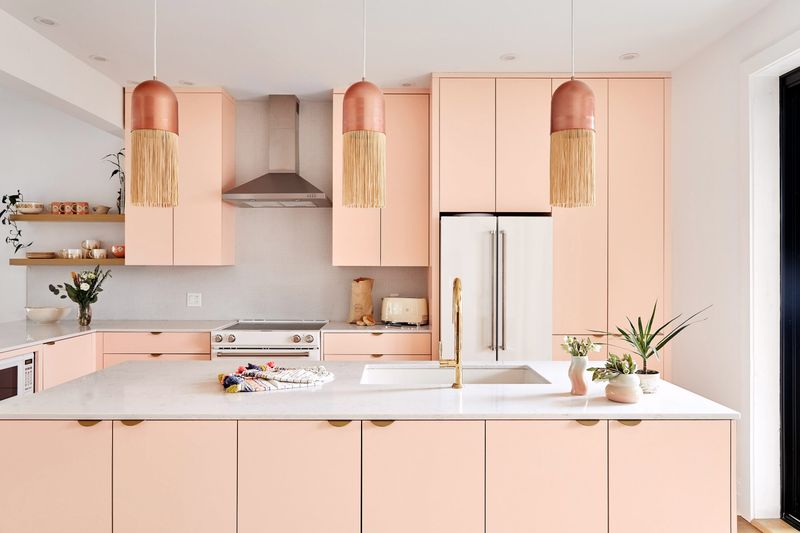
Peach kitchens disappeared with the Longhorns back when big hair was still big in Texas. This soft orange-pink hybrid color infected kitchens and bathrooms throughout the 1980s, often paired with teal accents and brass fixtures.
Nothing says “Reagan-era renovation” quite like peach walls. The color has such strong period associations that it’s impossible to use without turning your space into a nostalgic blast from the past.
When house-hunting clients call me in panic after discovering peach tile in their potential purchase, I always deliver the same verdict…total gut job or learn to embrace living in a John Hughes movie set.
18. Forest Green: The Woods Nobody Visits
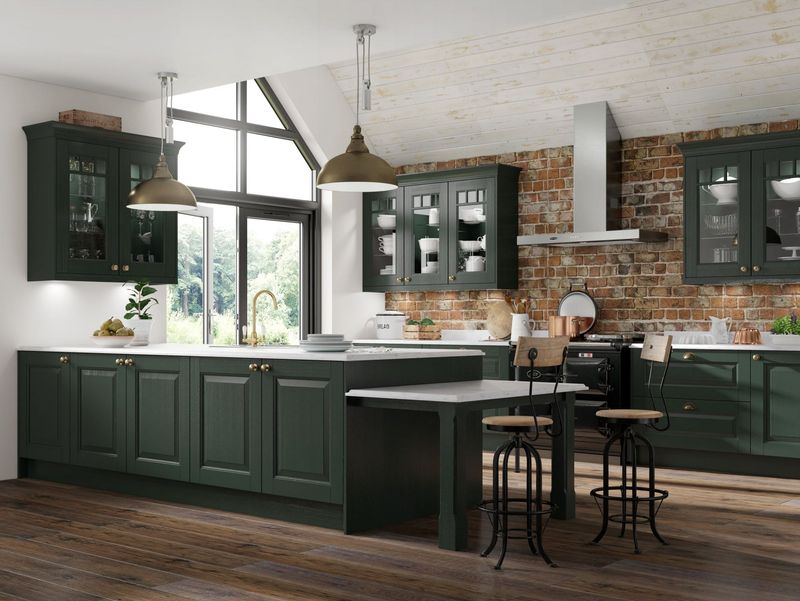
Forest green kitchens were abandoned with the Longhorns back when flip phones were cutting-edge technology. This deep, saturated green dominated 1990s kitchens, usually paired with burgundy accents and plenty of duck-themed decor.
The color now serves as a time stamp, immediately identifying when a kitchen was last updated. Designers across Texas report that forest green is among the most-cited “please make it go away” colors mentioned during initial client consultations.
Even in hunting-themed Hill Country homes, this particular shade has been replaced by more sophisticated, muted greens that don’t scream “Clinton administration.”
19. Mauve: The Rose That Wilted
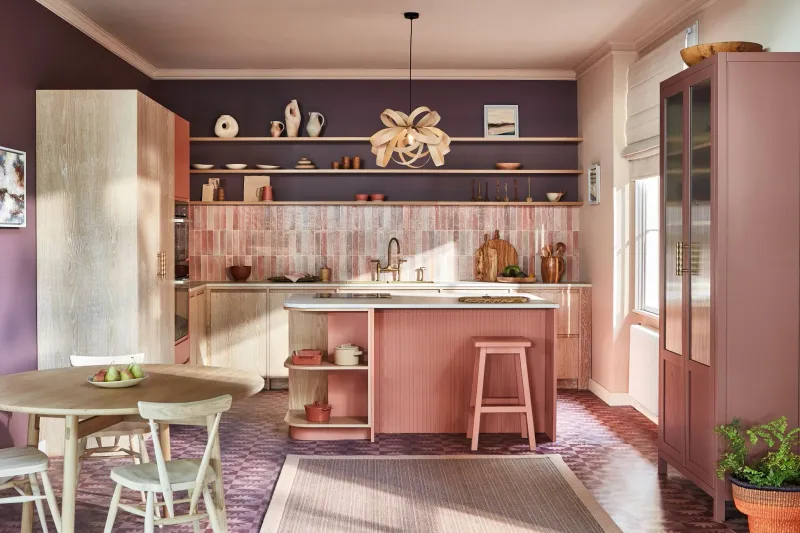
Ever wonder why mauve kitchens are about as welcome as shoulder pads at a Texas BBQ? This dusty purplish-pink rode off into the sunset back in the late ’80s, usually hanging out with country blue and floral wallpaper. It’s like a vintage TV rerun nobody asked for.
Using mauve today is like bringing back disco, fun for a joke, but not for your kitchen. When I spot mauve during home consultations, I know the kitchen hasn’t been updated since big hair was a thing!

